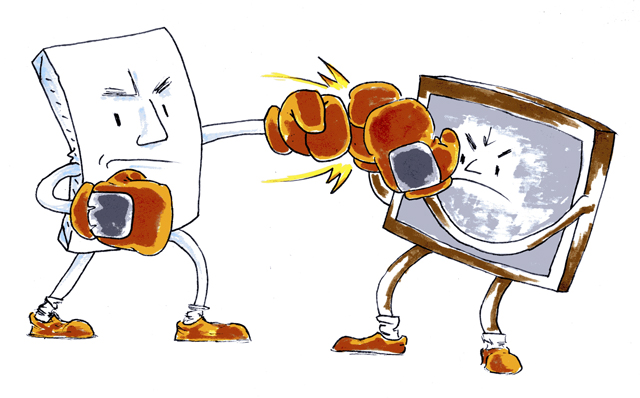After using Blackboard for 13 years, UT professors and students will make the switch to Canvas, a new learning management system.
Blackboard will be completely phased out by August 2015. Last school year, Canvas was implemented on a trial basis in some classrooms. Faculty and student survey responses showed that 80 percent of faculty and 66 percent of students were in support of Canvas. Based on these results, the Course and Learning Management Evaluation Steering Committee voted in favor of the transition 16 to 1.
As the transition officially begins this semester, not every student will interact with Canvas in their courses. But those who have a class using the new system have noticed a difference in accessibility.
Tiffany Yick, a mechanical engineering junior who uses Canvas in her Materials Engineering class, said she appreciates the fact that the Canvas courses still show up on the student Blackboard site as well as on the customized weekly logistics sent out by the Canvas system and the assignment notifications.
Professors have also seen benefits from switching to Canvas. When the trial period began, management professor Dennis Passovoy said he eagerly signed on to try out the new system,
“I’m what you might call a bit of a technology nerd,” Passovoy said. “I’m usually anxious to try out new things, especially when what I’m using is not totally working for me. Blackboard fell into that category. As a [Learning Management System] it is just OK, but there was a lot I needed it to do that it couldn’t handle.”
During focus groups in fall 2011, students and faculty expressed their dislike for the Blackboard interface. They also complained of a lag when waiting for a response.
Passovoy said that many students and faculty find Blackboard difficult to navigate and that Canvas offers a user-friendly interface comparable to Facebook, which makes the system very intuitive.
“The biggest difference is the way Canvas organizes a student’s schedule,” Passovoy said. “When they first log in, they see all the assignments they have due in the next seven days.”
Students also have the opportunity to predict many possible outcomes of their grades based on how they do on upcoming assignments and assessments.
Unlike Blackboard, Canvas operates with a cloud computing system. This allows the developer for the Canvas system, a company called Instructure, to send out updates and new features every three weeks in response to issues users are having with the system.
Many of the initial issues pointed out during the trial period were solved by both UT and Canvas staff, but a small issue remains in the communication aspect of Canvas, Passovoy said.
“When a student sends me a message from within Canvas, I have to go into Canvas to read and to respond it,” Passovoy said. “I can’t respond via regular email.”
Information Technology Services currently maintains the Blackboard system, according to Brad Englert, chief information officer for IT Services.
“Blackboard is hosted in our campus data center on University-owned equipment,” Englert said. “The current servers and storage are nearing the end of their useful life. The equipment replacement cost is estimated to be $330,000, as follows: $150,000 for servers; $135,000 for high-performance primary storage and $45,000 for utility-grade backup storage.”
Because Instructure does the troubleshooting, IT Services at UT does not control many of the system’s features like it did with Blackboard, but still has a part in maintenance.
“ITS will maintain the UT EID authentication interface to Canvas as well as the system that updates Canvas with current course, instructor and enrollment data from the Office of the Registrar,” Englert said. “ITS will continue to provide Help Desk support to students, faculty and staff.”
Overall, Blackboard expenses for the current fiscal year are $700,000 while Canvas is estimated to cost $635,000 annually. The estimated one-time transition cost is $63,500, Englert said.
This cost includes 24/7 support available to students, faculty and staff as they make the switch.
Mario Guerra, an instructional technology specialist said UT’s transition process will last two years, while many schools have transitioned from Blackboard or another system to Canvas in a semester or a year. He said UT is lengthening the process to allow users to adjust to this change and to allow professors to move their course material from one system to the next.
According to Englert, there are 483 primary instructors using the Canvas system, which equates to 508 courses and over 20,270 students.





















